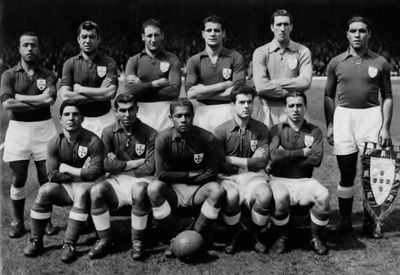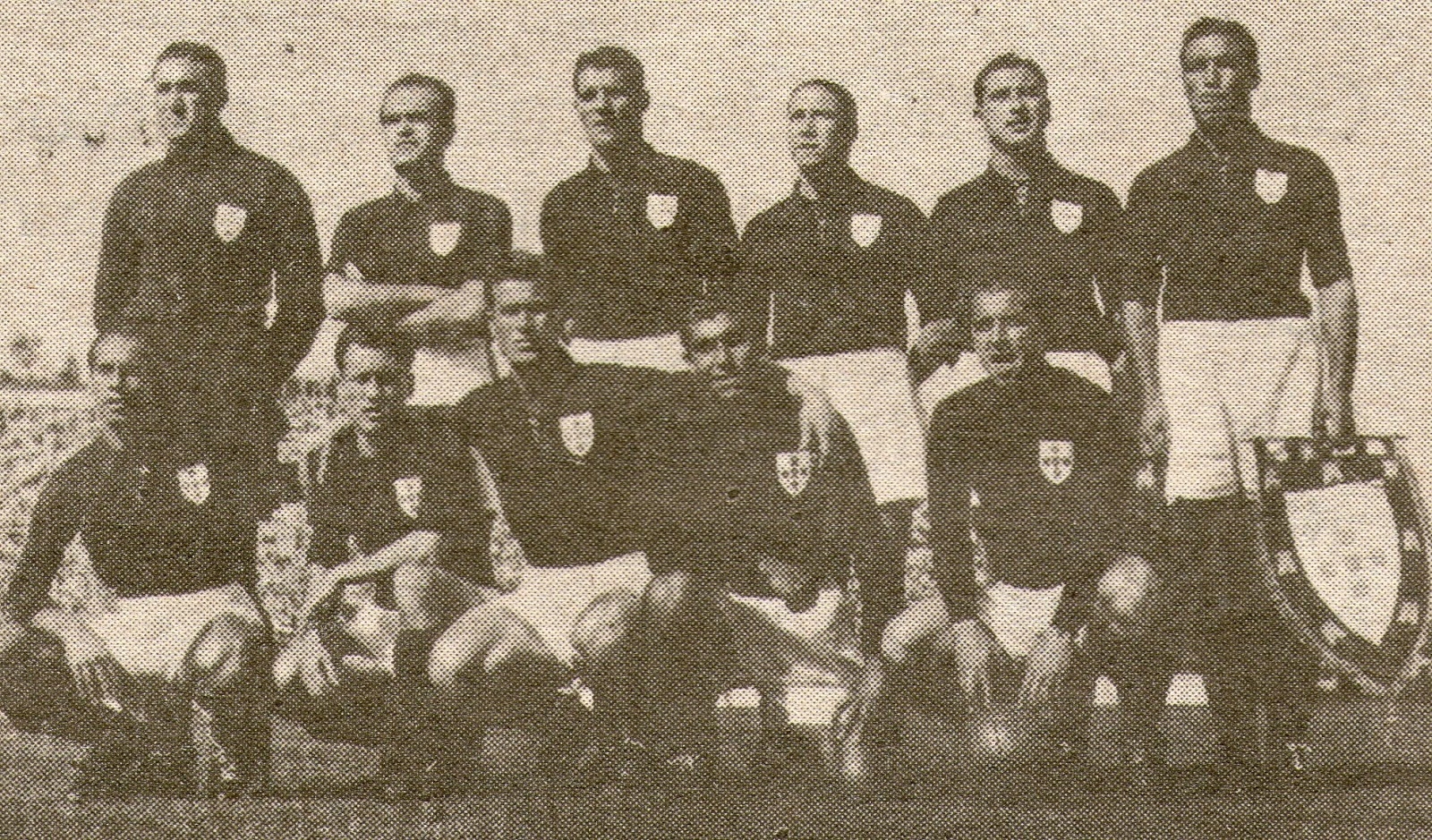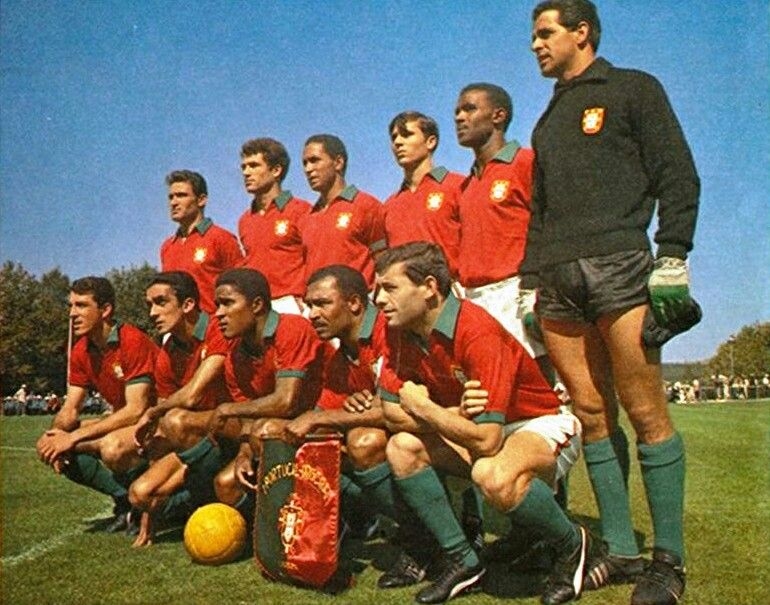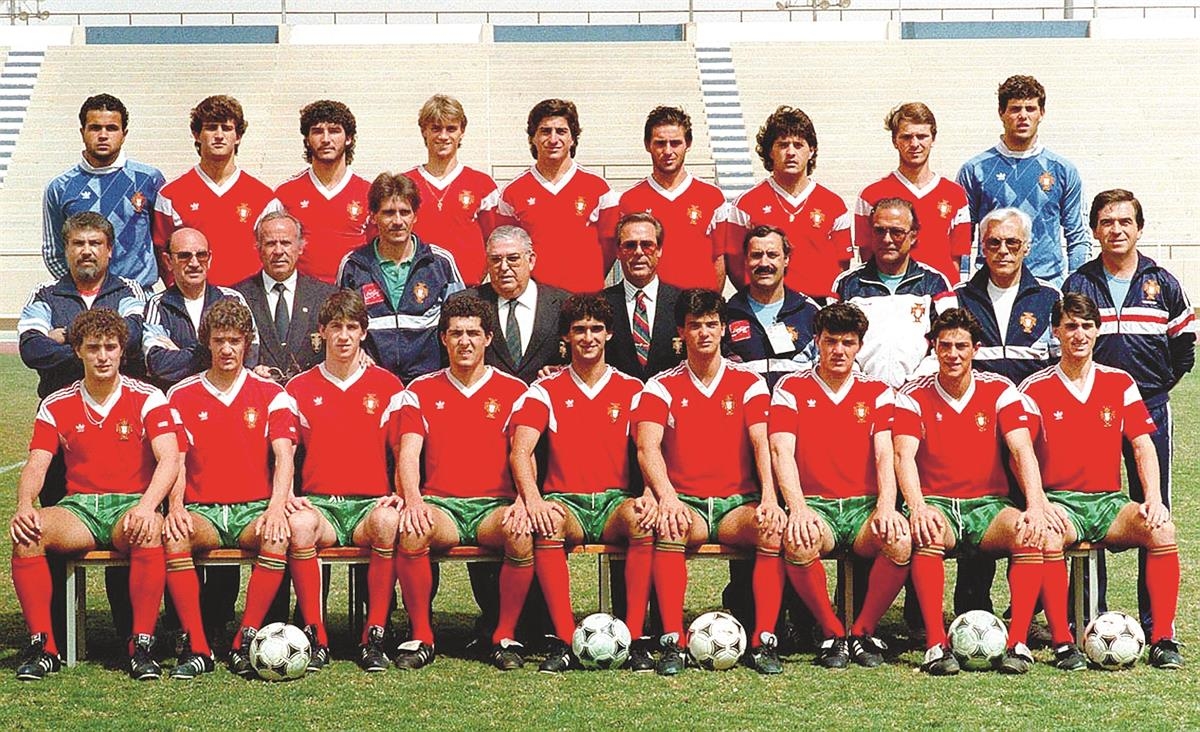- Official Site
- Portugal+
- Ticket Office
- Results
- Channel 11

History of Football in Portugal
Discover the history of football in Portugal, from the first matches to the greatest achievements. Relive every moment and wear the colors of Team Por
19 April 2022
Did you know that it was an anonymous off the island of Madeira that hosted the first football game in Portugal or that the game that marked the debut of the national team took place outside the national territory?
If you are a football lover and want to know everything about the history of Portuguese football, from the first touches on the round to the eternal kick by Éder that helped to establish Portugal as European champion in 2016, stay with us and accompany us on this journey through legends and achievements of the sport that set Portuguese hearts on fire.

First kicks in football history: a dream in the shape of a ball
As happened all over the world, the History of Football is being written in Shakespeare's language. The chronicles say that photographs or videos do not exist, that in 1875 at Largo da Achada located in Camacha, Madeira, a young British student on vacation named Harry Hinton started what is considered the first foot-ball game in Portugal.
However, it was only in 1888 that, far from imagining the revolution they would give rise to, the Pinto Basto brothers brought a leather ball to mainland Portugal. This ball starts rolling on a beautiful Sunday afternoon at Parada de Cascais in what would be the first “rehearsal”, slang of the time borrowed from rugby to define a soccer practice.
From training to practice it was a sparrow jump and, on January 22 of the following year, the same brothers, this time at Campo Pequeno in Lisbon, organized the first game itself in a dispute between an entirely Portuguese "eleven" and a constituted eleven only by Englishmen. Similar to what would happen a century later with extraordinary regularity in the clashes between the Portuguese and the English, the victory would smile to the national colors by 2-1.
After attracting the attention of the upper bourgeoisie and the aristocracy to the football phenomenon, in 1892 the Foot-Ball Club Lisbonense was born in 1892 by Guilherme Pinto Basto, a club that on March 2, 1894 would dispute the D. Carlos I Cup with the Foot -Ball Club do Porto, the genesis of what would become the current FC Porto, in the field of Oporto Cricket Club and which ended with a victory for the Lisboners.
Despite still being scrutinized by the working class, football has gained tremendous momentum that can be seen in the countless “academies” and clubs that were founded until the end of the century and which include, for example, Grupo Sportivo de Carcavelos, Real Ginásio Português, Porto Cricket or Sport Club Vianense, the latter still active.
The history of football in that century begins with the first international game of a national football team. The author of this feat was the CIF (Club Internacional de Foot-Ball) which, in 1907, went to Madrid to defeat Madrid Football Club.
Three years after this first European epic, Portuguese football has become a true motherhood for clubs. Only between 1904 and 1908 were born Boavista Footballers, the future Boavista FC, Sporting CP, a refounded FC Porto and Sport Lisboa, a club that after merging GS Benfica in 1908, would give way to Sport Lisboa e Benfica.
Despite the disorganization that marked the early years of the 20th century, rivalries between clubs grew, although always diminished by the absence of a truly national championship: from 1906, birth of the Lisbon Championship, through the 1st Porto Championship in 1913, the picture national competition until 1921/1922 was exclusively composed of regional events.

History of Football: the birth of the FPF and the Heroes of Amsterdam
In 1914, the ball starts to roll differently. The associations of Porto, Lisbon and Portalegre join forces and, on March 31, they founded the Portuguese Football Union (UFP), an entity that organizes and regulates the practice of football at the national level and which had the person of Dr. Sá e Oliveira its first president.
In addition to encouraging the creation of new associations throughout the country, one of the main reasons for its existence was found in article 6 of the UFP: the creation of the Portuguese Championship.
This dream would only come true in the 1921/1922 season when, after a regional qualification, FC Porto (Porto champion) and Sporting CP (Lisbon champion) face each other in a two-legged final that only a very final would break the tie. favor of dragons.
In 1926, at a UFP Congress, it was decided to change the organization's name to the Portuguese Football Federation (FPF), as well as organizing a competition in the format of a Championship (all against all and two rounds), which would take place in 1934 , under the auspices of a Football League.
The FPF would take the reins of the process in 1938, organizing the Championship - won by FC Porto in the first edition - and the Cup of Portugal, which debuted that year with the victory of Académica.
A few months before these achievements, the history of Portuguese football knew another memorable moment: the birth of the National Team.
Led by Cândido de Oliveira, the quinas team went to Spain for a private game with its Spanish counterpart, which ended with the victory of nuestros hermanos by 3-1.
After the faltering start, in 1925 the team of all of us would win 1-0 against Italy and, two years later, crush France at Lumiar with four unanswered goals.
We are now on the 27th of May 1928. The Portuguese team is in the Olympic football tournament of the Amsterdam Games (today considered as "World" by FIFA) and, after beating Chile (4-2) and Yugoslavia (2-1) , ended up inglorious elimination in the quarter-finals of the competition by Egypt (1-2) achieving, even so, the best result ever until Eusébio and company took Portugal to 3rd place in the World Cup in England in 1966.

The Five Violins and the construction of the "cathedrals"
It was not an orchestra in the literal sense of the term, but when Jesus Correia, Albano, Vasques, Travassos and Peyroteo took to the field in the 1940s with Sporting's shirt on, it was a sign that there was a recital on the way.
Forever remembered as the “Five Violins”, these forwards, who only played together for three years (1946-1949), scored more than 800 goals and gave a three-time title and a Portuguese Cup to Master Cândido de Oliveira's Sporting.
In front of this ensemble of undeniably talented soloists was Peyroteo. Born in Angola, Peyroteo came to Sporting in the 37/38 season and over thirteen years with a lion on his chest immortalized his name in the collective imagination of football history, being, even today, the player with the most goals scored (332) in the national Championship.
A year before the five violins start their “tour” through the Portuguese football fields, the unusual happens: Augusto Silva's Belenenses (then coach, after being one of the most brilliant players of his generation) takes the first championship to “três grandes”, a feat that would only be equaled in the millennium change by Jaime Pacheco's “Boavistan”.
If the 1940s are for classical music, the next decade belongs to the cathedrals where it will be played in the next half-century. The Estádio das Antas was born in 1952, the Estádio da Luz in 1954 and the José de Alvalade Stadium, as well as the Restelo Stadium, opened in 1956.
Despite the beautiful equipment of the team of all of us, the Seleção misses all the qualifications for Europeans and World Cups of the decade and only the appearance of iconic figures like Matateu and José Águas helped to alleviate the dismay that gripped national football.

History of Football in Portugal: The Elevator of Glory
With the deepening of professionalism started in the previous decade and the arrival of coaches with new game philosophies such as Otto Glória, Fernando Riera and, above all, the temperamental Béla Guttmann, clubs and national teams would gain strength, culminating with the conquest of the European Champion Clubs' Cup by Benfica by Eusébio & Companhia in two consecutive years (1961 and 1962), while on the other side of the second circular the “cantinho do Morais” gave Sporting the right to raise the Cup Winners Cup in 1964.
Two years later, this generation of players doomed to glory came together under the same equipment to ensure the team's first qualification for a World Cup, a tournament from which the team leaves with third place on the podium and a Eusébio washed in tears , but with the world of football at his feet and the tournament's top scorer award in his pocket with 9 goals scored.
The next decade was one of diet. Neither clubs nor the national team managed to obtain outstanding results on the international stages, but in this rectangle planted by the sea, there were those who found reasons to celebrate. After 19 drought, FC Porto won the National Championship again in 1978 by the hand of the brilliant José Maria Pedroto.
Magical summer
Recomposed from the desert of the previous decade, the Portuguese team lives the dream. In the magical summer of 1984, Portugal surprised the football world by overcoming the Euro 84 group stage and forcing France to work “extra hours” to beat the corner team 3-2.
It was the time to make dreams come true and, in this enchanting wave, not even Germany stopped the team on its way to the World Cup in Mexico. In the 54th minute of the last and decisive qualifying game, Carlos Manuel shoots from the middle of the street to the back of the net of an astonished Harald Schumacher, sealing not only a historic victory on German soil, but also the ticket to Mexico 86, World Cup where she would end up eliminated in the group stage after a troubled stay in mariachi lands.
While the dust of the “Saltillo” affair was calming, a group of young players led by Professor Carlos Queiroz was preparing to conquer the world. In 1989, the red jersey that used to equip the under-20 team, “dispatches” Nigeria in the final in Riyadh (Saudi Arabia) by 2-0 and raises the cup of world champion in the category.
Two years of football history, the feat is repeated. Faced with a Estádio da Luz bursting at the seams, the Portuguese under-20s snatch, with merit and a lot of talent, the Under-20 World Cup for the second consecutive time against a Brazil in tears.
Despite failed qualifications for Euro 92 and World 94, the two-time world junior champion generation would take the team to the European Championship in England (1996) where, inspired by the class of Figo, Rui Costa and João Pinto, Portugal would reach the quarters of end of the test.
If the team oozed class on the pitches of the world's biggest competitions, FC Porto was not far behind, snatching the European Champion Clubs' Cup in 1987 against Bayern Munich thanks to the inspired heel of Madjer.

- Choose a Language
- Portuguese
- English

